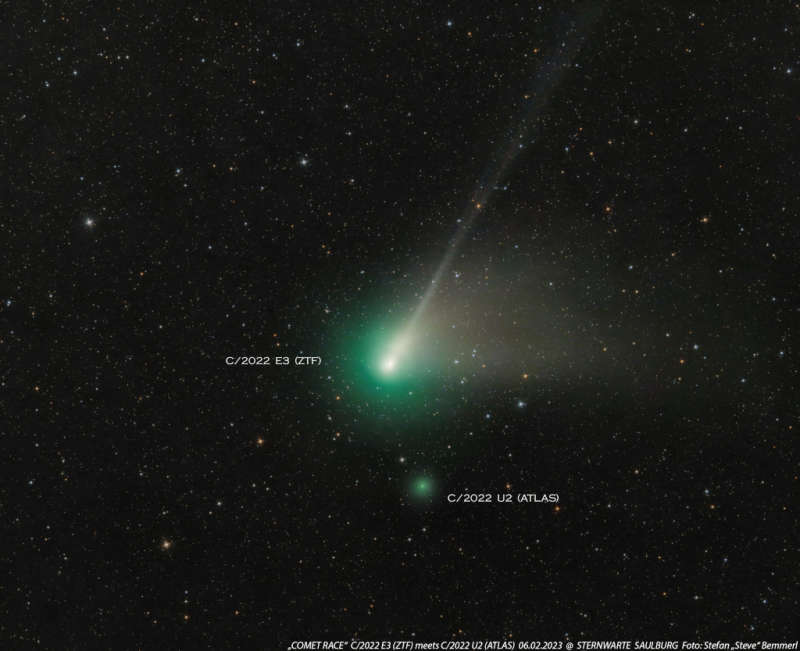Credit & Copyright: Stefan Bemmerl
Explanation:
Fading as it
races
across
planet Earth's northern skies
comet C/2022 E3 (ZTF)
shares this telescopic frame
with comet
C/2022 U2 (ATLAS).
Captured on the night of February 6 from
a garden observatory in Germany's Bavarian Forest, the starry field of
view toward the constellation Auriga spans about 2.5 degrees.
Discovered by
sky survey projects in 2022 (the
Zwicky Transient
Facility
and the
Asteroid
Terrestrial-impact Last Alert System)
these
long-period
comets
are outbound, reaching perihelion just last month.
The much fainter comet ATLAS made its closest approach to our fair
planet on January 29 at a distance of about 4.6 light-minutes, compared
to a mere 2.4 light-minutes for comet ZTF on February 2.
This comet ATLAS lacks the well-developed tails of the
formerly
naked-eye comet ZTF.
But both comets sport greenish tinted comas,
emission from diatomic carbon molecules fluorescing in sunlight.
Continuing its dash across planet Earth's sky, the
good-binocular
comet
ZTF will appear close to bright planet Mars tonight.
1999 2000 2001 2002 2003 2004 2005 2006 2007 2008 2009 2010 2011 2012 2013 2014 2015 2016 2017 2018 2019 2020 2021 2022 2023 2024 2025 |
Yanvar' Fevral' Mart Aprel' Mai Iyun' Iyul' Avgust Sentyabr' Oktyabr' Noyabr' Dekabr' |
NASA Web Site Statements, Warnings, and Disclaimers
NASA Official: Jay Norris. Specific rights apply.
A service of: LHEA at NASA / GSFC
& Michigan Tech. U.
|
Publikacii s klyuchevymi slovami:
comet - komety
Publikacii so slovami: comet - komety | |
Sm. takzhe:
Vse publikacii na tu zhe temu >> | |
